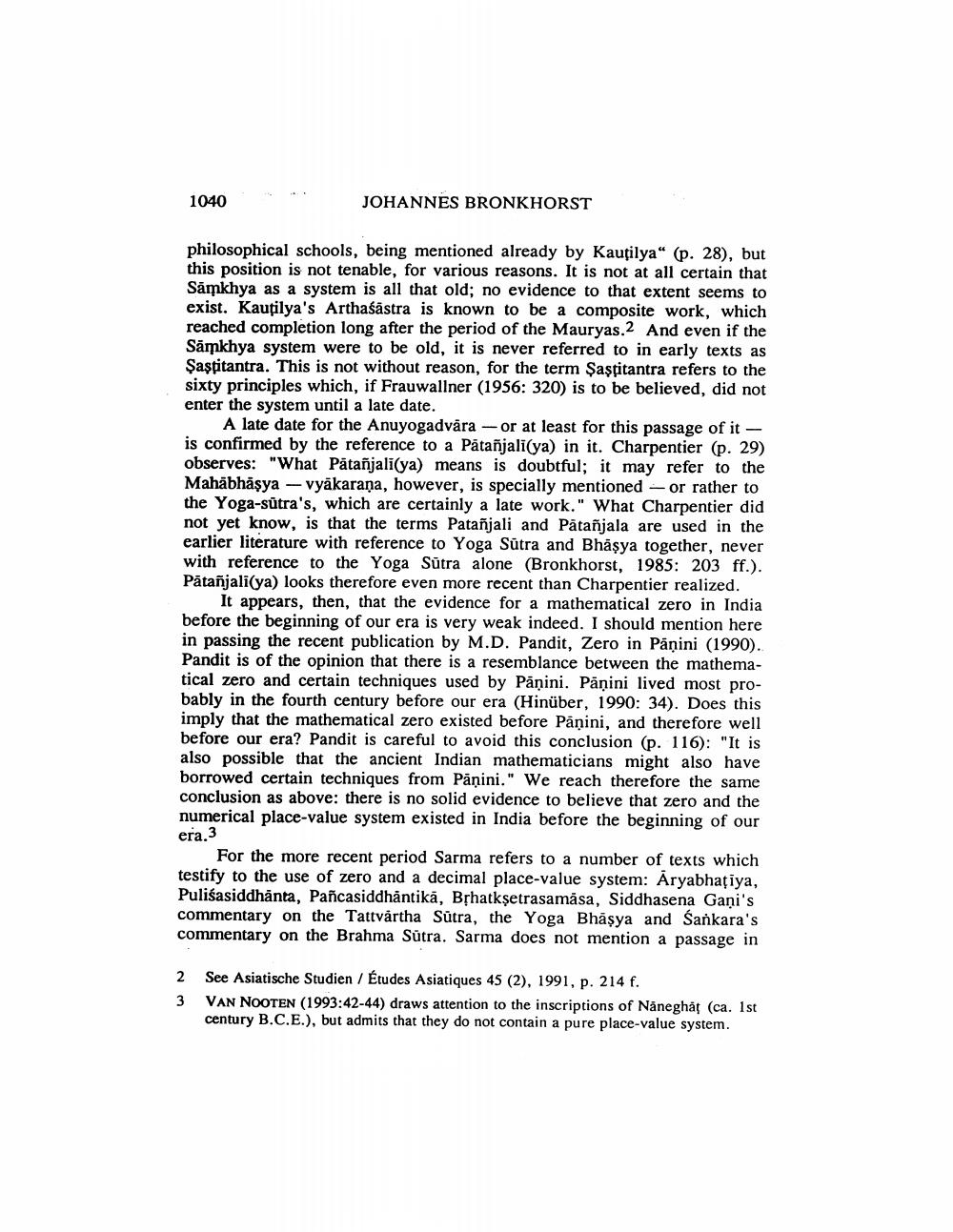Book Title: Note On Zero And Numerical Place Value System In Ancient India Author(s): Johannes Bronkhorst Publisher: Johannes Bronkhorst View full book textPage 2
________________ 1040 JOHANNES BRONKHORST philosophical schools, being mentioned already by Kautilya" (p. 28), but this position is not tenable, for various reasons. It is not at all certain that Samkhya as a system is all that old; no evidence to that extent seems to exist. Kautilya's Arthaśästra is known to be a composite work, which reached completion long after the period of the Mauryas.2 And even if the Samkhya system were to be old, it is never referred to in early texts as Şaşţitantra. This is not without reason, for the term Şaşţitantra refers to the sixty principles which, if Frauwallner (1956: 320) is to be believed, did not enter the system until a late date. A late date for the Anuyogadvara - or at least for this passage of it - is confirmed by the reference to a Pätañjali(ya) in it. Charpentier (p. 29) observes: "What Pätañjali(ya) means is doubtful; it may refer to the Mahabhäşya-vyäkaraṇa, however, is specially mentioned or rather to the Yoga-sütra's, which are certainly a late work." What Charpentier did not yet know, is that the terms Patanjali and Patañjala are used in the earlier literature with reference to Yoga Sutra and Bhasya together, never with reference to the Yoga Sutra alone (Bronkhorst, 1985: 203 ff.). Patanjali(ya) looks therefore even more recent than Charpentier realized. It appears, then, that the evidence for a mathematical zero in India before the beginning of our era is very weak indeed. I should mention here in passing the recent publication by M.D. Pandit, Zero in Panini (1990).. Pandit is of the opinion that there is a resemblance between the mathematical zero and certain techniques used by Panini. Panini lived most probably in the fourth century before our era (Hinüber, 1990: 34). Does this imply that the mathematical zero existed before Panini, and therefore well before our era? Pandit is careful to avoid this conclusion (p. 116): "It is also possible that the ancient Indian mathematicians might also have borrowed certain techniques from Panini." We reach therefore the same conclusion as above: there is no solid evidence to believe that zero and the numerical place-value system existed in India before the beginning of our era.3 For the more recent period Sarma refers to a number of texts which testify to the use of zero and a decimal place-value system: Aryabhatiya, Pulisasiddhanta, Pañcasiddhantikā, Bṛhatkşetrasamäsa, Siddhasena Gani's commentary on the Tattvärtha Sutra, the Yoga Bhasya and Sankara's commentary on the Brahma Sutra. Sarma does not mention a passage in 2 See Asiatische Studien / Études Asiatiques 45 (2), 1991, p. 214 f. 3 VAN NOOTEN (1993:42-44) draws attention to the inscriptions of Naneghat (ca. 1st century B.C.E.), but admits that they do not contain a pure place-value system.Page Navigation
1 2 3 4
